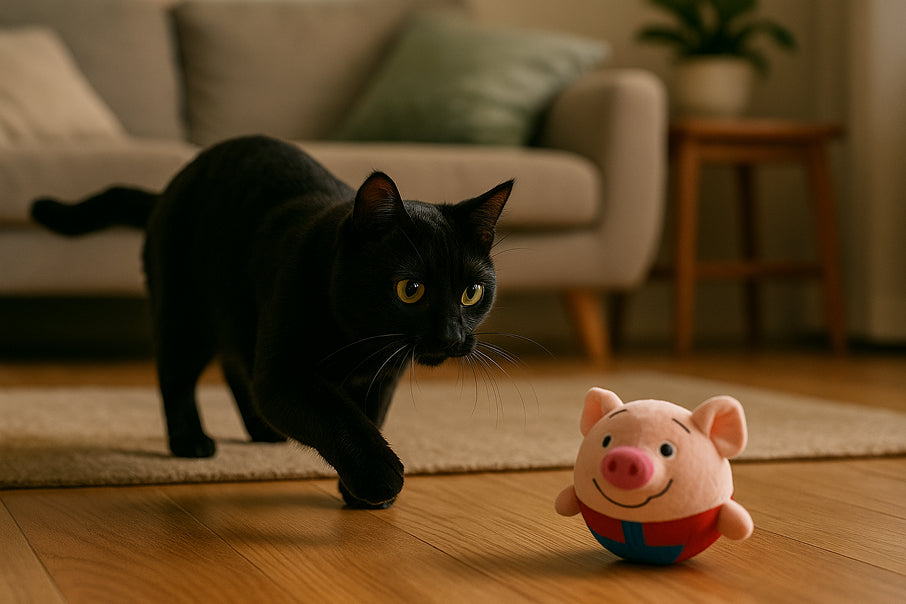Understanding Cat Behavior and Body Language Basics
Cats may be mysterious, but they’re always communicating—if you know how to read the signs. Understanding cat behavior starts with recognizing basic body language and emotional cues. From slow blinks to tail flicks, your cat’s movements reveal their mood, needs, and trust levels. At PetToyBarn.com, we help you build a stronger connection through better awareness and feline-friendly tools.

How to Read Cat Body Language Like a Pro
Cats use their entire body to communicate. Unlike dogs, they’re more subtle—but just as expressive. Learning a few cat body language basics will help you understand what your feline friend is trying to tell you every day.
Tail Signals:
-
Tail up = confident and friendly
-
Tail tucked = nervous or scared
-
Tail swishing = overstimulated or annoyed
Ear Position:
-
Forward = curious or content
-
Backward = irritated or alert
-
Flattened = scared or defensive
Eyes and Whiskers:
-
Slow blink = trust and affection
-
Wide pupils = excitement or fear
-
Forward whiskers = curious or playful
When you’re brushing your cat or approaching for a cuddle, these signals can help you know when to engage—and when to give them space.
Emotional Cues in Cats: What Their Behavior Really Means
Understanding your cat’s emotional world goes beyond posture. Emotional cues show how they feel about you, their surroundings, and daily routines.
Signs of a Happy Cat:
-
Kneading or purring while near you
-
Following you from room to room
-
Rubbing their head or body against you
Signs of Stress or Anxiety:
-
Hiding or withdrawing
-
Sudden hissing, swatting, or running away
-
Over-grooming or changes in litter box use
These behaviors often emerge during transitions—new pets, house guests, or changes in routine. That’s when tools from PetToyBarn.com, like calming sprays or cozy hideouts, can help bring comfort back into their space.


Smart Electric Plush Dog and Cat Toy – Interactive Bouncing Fun for Indoor Play
Build Trust Through Routines and Respect
Cats thrive on routine and predictability. Setting consistent times for grooming, feeding, and play helps reduce stress and builds lasting trust.
Tips for Strengthening Your Bond:
-
Groom gently with soft brushes made for cats’ delicate coats
-
Offer treats or calm petting after every hygiene session
-
Respect their signals—if your cat walks away, give them space
-
Use enrichment toys that encourage natural behavior like stalking and pouncing
At PetToyBarn.com, we carry a range of grooming and wellness products designed with feline behavior in mind. Whether your cat is bold or shy, we’ve got tools to support a calmer, more confident pet.

Conclusion
Mastering the art of understanding cat behavior helps you care for your cat in ways that truly matter. By tuning into body language and emotional cues, you’ll deepen your bond and reduce everyday stress. Ready to create a more harmonious home? Shop feline-friendly tools and wellness products now at PetToyBarn.com.


